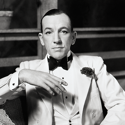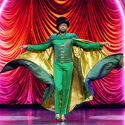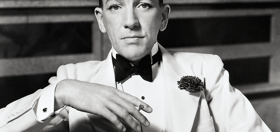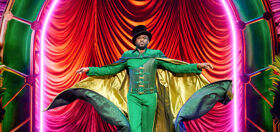
Hide/Seek: Difference and Desire in American Portraiture, a new exhibit that opened over the weekend at the Smithsonian’s National Portrait Gallery, features 105 works from artists including Jasper Johns and Thomas Eakins that, says curator David C. Ward, are not overtly queer — despite the show’s purposeful message that sexual orientation and gender identity played a crucial part in American art. “There’s been an entire history hiding in plain sight,” he says. “Telling the history of art without the history of gay people is like telling the history of slavery without mentioning black people.” Allow some art types to disagree!
In an ArtInfo piece titled “What’s Troubling About the Smithsonian’s “Hide/Seek” Show,” Andrew M. Goldstein and Andrew Russeth respond:
Well, no. […] But being gay is not a prerequisite for being an artist — no matter what some more conservative fringes of the United States may think about the convention-flouting art world — while being black was a requirement for being a slave. Also: at this point, exactly how hidden is the supposedly clandestine history of gays in art?
[…] What the new show offers, an exhibition statement proposes, are abstracted or discreet depictions of the issues at hand. The show’s organizers take the twin (vague) themes of “gender and sexuality” and use them to gather together work by some of the greatest artists of the past century, taking a sweeping look at variously coded identities by artists whose own sexual orientations run the gamut from strictly homosexual to strictly heterosexual. The result is that the 105 works on display in the show, which will run through February 13, don’t obviously cohere, or rarely cohere in the same way to the proposed theme.
It is focusing on gender and sexuality — or race or nationality — that places the Smithsonian “so consistently out of the mainstream of contemporary art practice,” the pair argue, though taking time to note highlighting under-served categories are “worthy efforts.”
While I’m by no means an art expert — I’m one of these “I know what I like, and I know what I don’t” types — is it so bad for a museum like the Smithsonian to collect these works under a single theme so they’re accessible to, say, regular folks? Certainly not. And it’s for the same reasons that exist outside the art world: Gays have been mainstreamed enough they are are now part of popular culture (we’d argue The Gays drive pop culture, but whatever), appearing even on CBS programs!, and yet we would never say we’ve so successfully infiltrated the masses that we can start ignoring our group identity. Let us not mistake the Smithsonian’s showcase of these works as an attempt to single them out for ovation based on their queerness, but to hold them in high esteem for being works that happen to be queer.
How about we take this to the next level?
Our newsletter is like a refreshing cocktail (or mocktail) of LGBTQ+ entertainment and pop culture, served up with a side of eye-candy.



















Michael
“Telling the history of art without the history of gay people is like telling the history of slavery without mentioning black people.” Hmm…let me think. Without black people, there would not have been black slavery, this much is true. Without gay artists, there would have been…no art. Must be a powerful exhibit – can’t wait to see.
Jimmy Fury
Being black may have been a requirement to be a slave but it wasn’t a requirement to be part of the history of slavery.
The vast majority of the underground railroad, for example, was white land owners willing to hide and transport escaped slaves… so… yeah. The analogy still stands.
Jimmy Fury
Crap, hit submit too soon.
There’s also the fact that the US doesn’t hold a trademark on slavery or it’s history. Slavery existed well before the United States did and it has involved every race on the planet.
You could tell the history of slavery without mentioning black people. It would just be incomplete. That’s the point.
Alex
To be fair, it doesn’t seem like they’re saying shows on the subject of queer artists or queer art are intrinsically bad. They’re saying that this one in particular is poorly curated.
I haven’t seen it and can’t judge for myself, but their argument does make sense. The curators seem willfully vague about what merits inclusion in this show and the word “queer,” not to mention “gender identity,” applied to the history of American art casts a pretty big net. From what I could gleam from the ArtInfo article, they tried to include everyone and ended up with more of a collection than a curated show. As the Andrews say, a worthy effort, but disappointing for one of the nation’s top art museums.
Alex
I really really really really want to see this. It’s an exhibit straight out of my dreams.
Elizabeth
The ArtInfo article that the author refers to was a review written of the show based entirely upon the exhibition website and the AP article written about the show. This shows poor journalistic integrity, and the authors of that piece have since back peddled amid a commenting fury on their Facebook page.
As for the quote, “Telling the history of art without the history of gay people is like telling the history of slavery without mentioning black people,” it was taken somewhat out of context. David C. Ward, the curator, was explaining how when he was still in school, the historical analysis of American slavery did not look at the specific story of individual slaves. Similarly, the role of gays in art has been suppressed to the point that some have claimed the exhibit “outs” artists who have been dead for 94 years. The curators’ comments from that Facebook exchange in response to Art Info follow:
“Museums have not considered the role of gay and lesbian artists in the making of art regardless of what the anonymous critic maintains. I said that doing this kind of work without considering the role of sexuality is like “writing the history of slavery without considering the role of black people.” And it is precisely the case that the history of slavery was written for decades without considering the lived history of African-American slaves — the historiography of slave life is very recent. This silence in the case of slaves has been replicated in the treatment of the history of other despised and marginalized minorities for working people to gays. It is precisely against the blinkered and self-satisfied attitude of your anonymous reviewer that we conceived and executed what is the first major museum exhibition to consider the theme of difference in the making of modern portraiture.” – David C. Ward, curator
“Your review of Hide/Seek conflates the presence of gay artists in history with the writing of an art history alive to gay themes. They are hardly the same, as should be self-evident. While we have known that many American artists are gay, that fact is routinely disavowed, especially in museums, and especially since the Mapplethorpe brouhaha of 1989. If you don’t know how aggressively museums police information about sexuality, you’ve just not been paying attention–just look at the way MOMA overlooks David Wojnarowicz’s gay politics in their wall labels, or how recent exhibitions of Jasper Johns or Robert Rauschenberg ignored the fact that these men were lovers during the most productive moments of their respective careers. Surely the fact that this is the first show of its kind testifies to necessity of foregrounding sexuality as an interpretive matrix. Your simple-minded review ignores the way our exhibition works to decenter a vision of sexuality delimited to biography for a much richer, more nuanced account of how sexuality governs not just the production, but the reception of works of art, how they are understood and misunderstood, and how that understanding changes over time.” – Jonathan Katz, curator
As for claims that the show lacks coherence, this is by no means a result of the curators’ lack of engagement with the issues at hand. Jonathan Katz began planning the exhibit with a list of 486 “must-haves.” However, many institutions and collectors did not want to support the show, revealing the homophobia still very much ingrained in art historical academic discourse. Regardless, a huge outpouring of private support, unprecedented for any other show at the National Portrait Gallery, ensured that this show was made a reality.
Mike
Rather: “singl[ing] them out for ovation based on their queerness, but to hold[ing] them in high esteem for being works that happen to be queer”…by singling them out.
L.
“But being gay is not a prerequisite for being an artist”
Indeed, and no-one said that, so the point is somewhat moot.
“while being black was a requirement for being a slave.”
Yeah, because there never have been any slaves that weren’t black, so your point is so valid.
Idiots.
ewe
Thanks for the tip. I am definitely attending.
E
This exhibition is powerful and beautiful. Don’t get bogged down in the poorly researched ArtInfo article.
Jennifer
Hello,
Feel free to add a widget of the book to your website by clicking here: http://www.randomhouse.com/catalog/display.pperl?isbn=9781588342997 and contact me if you would like to learn more about the book.